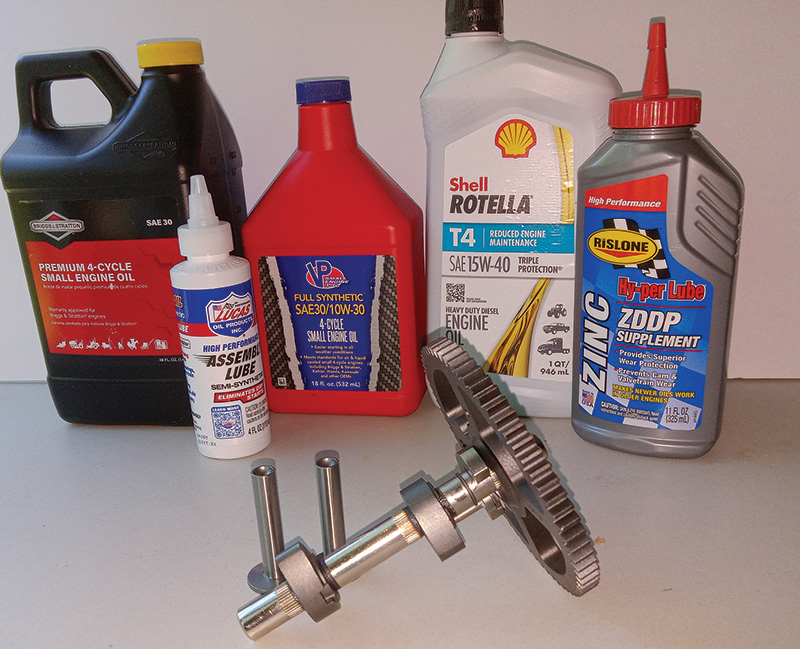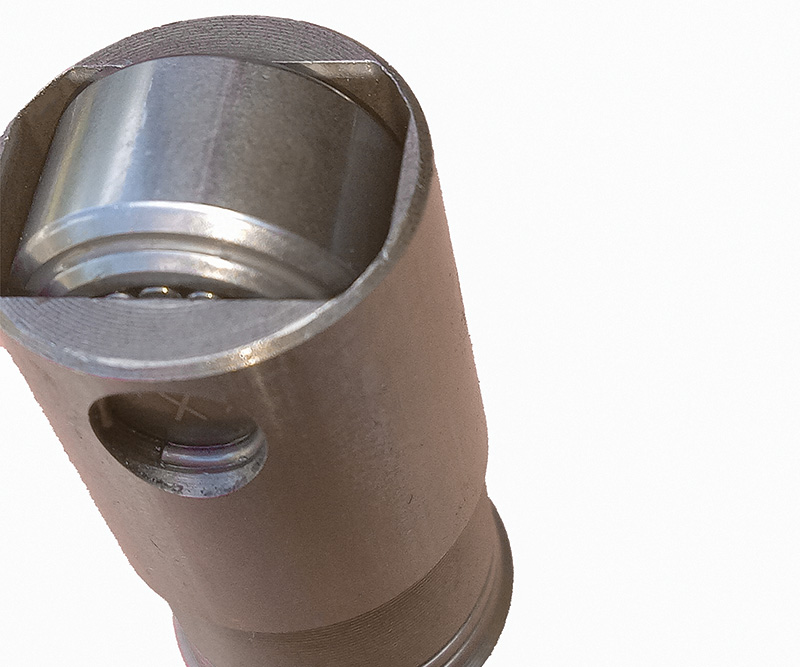
Small-engine camshaft wear may be resolved by using oils specifically labeled for small, air-cooled engines like the Briggs & Stratton and VP brands. Using these dedicated lubricants is likely more cost effective and beneficial than dosing nonspecific oils with zinc anti-wear supplements. Photos by Scott Nesbitt
Why are small engine camshafts failing so frequently?
Could using original equipment manufacturer engine oil cure this disease?
Cam failure is real. Ebay has hundreds of listings if you search “Briggs camshaft.” Ditto for other engine brands.
Cam failure litters internet forums and social media sites.
This plague is fairly recent. It results from history, and history may offer the cure.
From early on, four-cycle engines used flat-bottom valve lifters (aka tappets) that followed the up-down motion of the camshaft lobes. The cam lobe tended to wipe oil off the lifters, allowing metal-to-metal contact. By the 1930s, a family of “zinc” anti-wear extreme-pressure additives were added to the oil. Especially effective were two additives, zinc dialkyldithiophosphate (ZDDP) and zinc dithiophosphate (ZDTP), that contain zinc, phosphorus and sulfur.
In 1975, the federal government mandated installing catalytic converters to cars, followed by light trucks in later years. Leaded gasoline was all but banned at the same time, since lead hurt humans and defeated the catalytic action of the platinum, palladium, rhodium, cerium and ruthenium in the converter.
The early 1990s brought concerns that zinc and phosphorus in oil that got into the combustion chamber could also neutralize the catalytic converters, which are covered by long-term warranties mandated by federal law. In 2005, vehicle makers and the oil industry adopted limits on zinc additives, applicable to both gasoline and diesel engines.

A roller riding on needle bearings is the current standard valve lifter design in modern engines that can no longer use high concentrations of zinc/phosphorus anti-wear oil additives.
In the decade before that limit was imposed, on-road engines were redesigned — rollers replaced flat cam followers, wiping away the oil-wiping problem — except for small, air-cooled engines. The cost of redesigning engines would financially stress an industry rattled by the 2020 Chapter 11 bankruptcy filing by Briggs & Stratton.
So, the small-engine people used oil to solve the flat-tappet lubrication problem. The oil sold under most small-engine brands is high-zinc oil formulated 15 or more years ago.
Ditto for aftermarket oils that specify they are for four-cycle small engines. These are absolutely not compatible with modern automotive engines.
The American Petroleum Institute sets standards for oil performance. The latest top oil category is API-SP, adopted in 2020. The specialty small engine generally conforms to the API-SJ standard from 1997, the 2001 API-SL standard, the 2004 APR-SM and/or the 2010 API-SN.
An interesting sidenote: Some of the specialty small-engine oils come in straight full-synthetic 30W, a grade that’s hard to find in this multi-viscosity world.
And this summer-weight oil is reasonably priced.
Scott R. Nesbitt is a freelance writer and former GCSAA staff member. He lives in Cleveland, Ga.